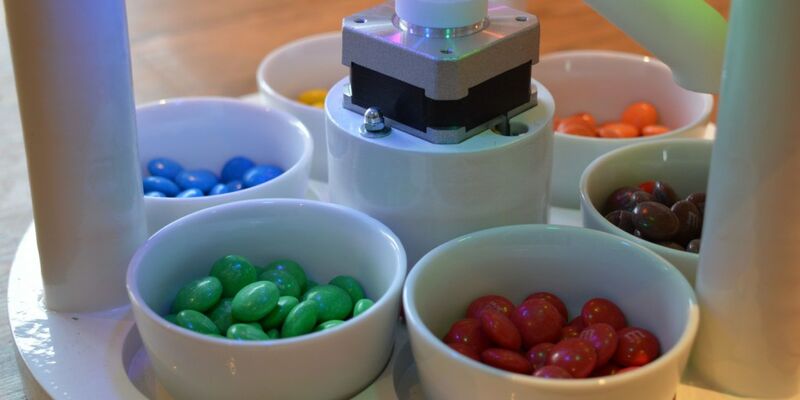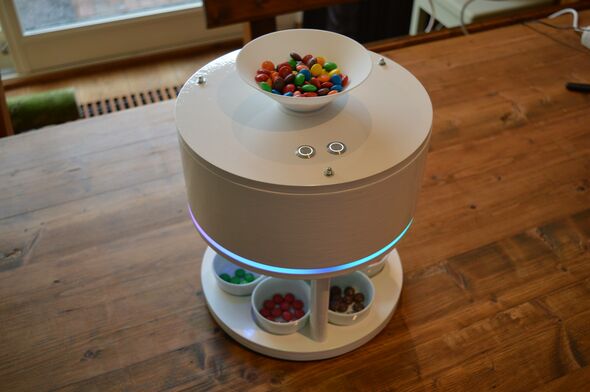
- Student
- 22/02/2017
TU/e student's candy-sorting machine goes viral
In a two-week period his video clip scored a cool 15 million views - a staggering audience for a homemade machine - and totally unexpected. Second-year TU/e student Willem Pennings is the inventor of a device that sorts M&Ms and Skittles by color. “That's hugely rewarding after you have worked on a project for such a long time.”
The idea for a machine that sorts M&Ms and other candy by color is not new, the second-year student of Mechanical Engineering hastens to explain. Four or five years ago, Pennings saw a YouTube video of a similar machine and felt the whole operation could be done faster and more elegantly.
About nine months ago, in May 2016, Pennings set to work in earnest developing the machine. He started by drawing the various internal parts in a 3D modeling program. At Eindhoven's Shapeways, he got the parts printed. "Then I checked out what didn't work and I got new parts printed. After that I started making the casing, I optimized the machine and corrected all the software errors I could find.”
How the machine works in a nutshell: the M&Ms or Skittles are dropped into the top of the machine and fed into a funnel. Next, they are stirred and, positioned vertically, they fall into a tube one at a time, so that each candy sits in its own slot. Here, a color sensor records the color of the candy and finally the candy is dropped into the right dish at the bottom of the machine. With a throughput time of about two seconds, the machine is two or three times faster than the original that inspired him, believes Pennings.
Two weeks also, when Pennings published the project on his blog, it received a lot of attention right away. On the busy internet forum Reddit the sorting machine made the front page in no time. And it wasn't only various news sites that posted the short film; radio broadcasters including 3FM, Veronica Radio and Qmusic all found their way to the inventor, as did the children's television program Zapplive. According to Pennings, the film has now been seen some 15 million times across the various media outlets.
The massive response to his machine in recent weeks is, says Pennings, “hugely rewarding. It is a kick to see that people really like it. I'm being overwhelmed by compliments. And some people are asking if they can have the source code because they want to make their own machine. Of course, that's just fantastic.”

Discussion